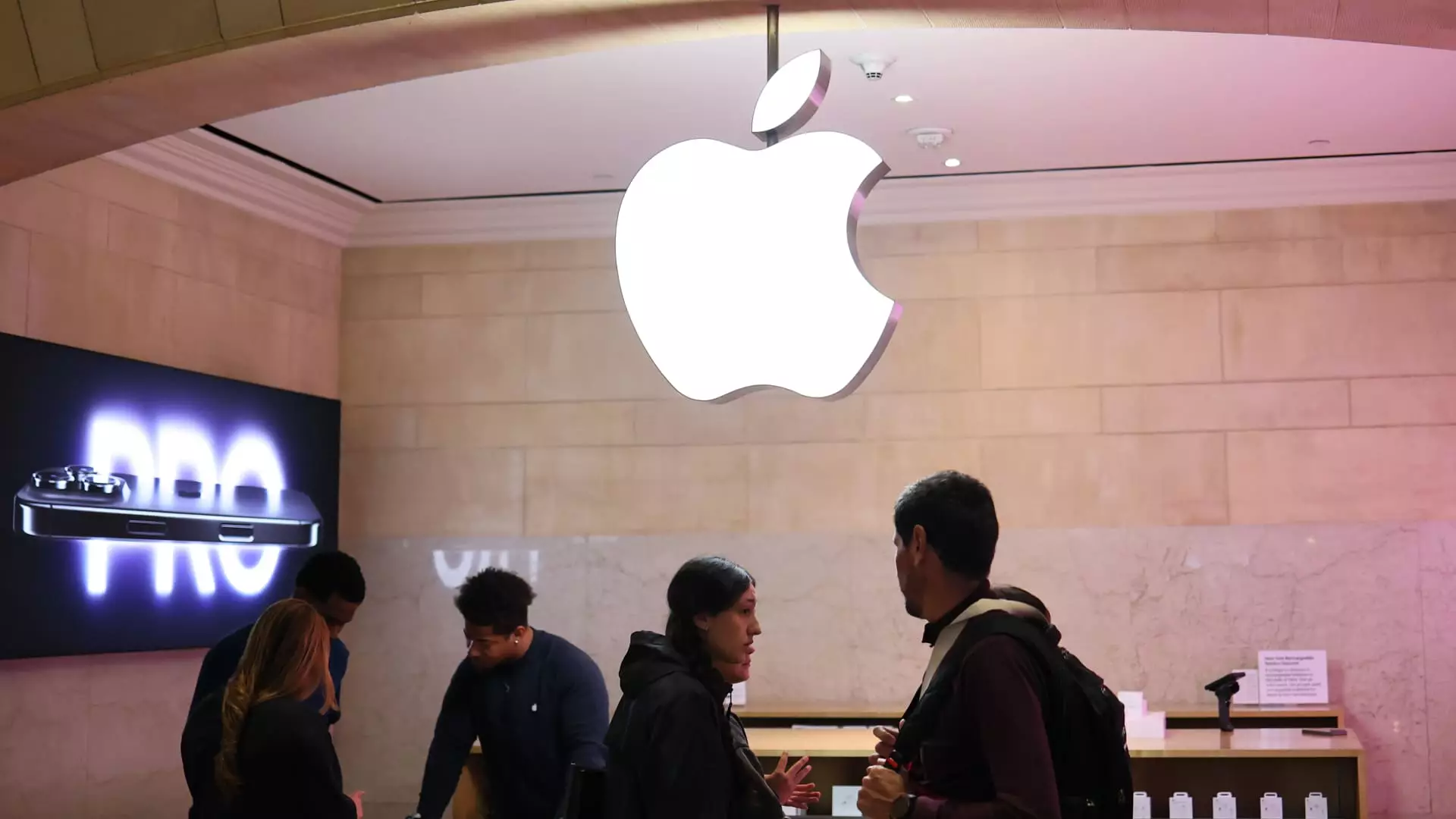The technology landscape is notoriously rife with risks, and Apple Inc. finds itself at the forefront of an unprecedented storm, courtesy of former President Donald Trump’s aggressive tariff regime. Analysts like Dan Ives from Wedbush Securities have drawn attention to a grim reality: the impact of these tariffs is posing a substantial threat to Apple’s financial viability. While Ives remains optimistic about Apple’s long-term prospects, the urgency of the situation cannot be dismissed. His analysis includes a significant reduction of Apple’s 12-month price target—a 23% slashing from $325 to a far less promising $250. The broader implications of this situation extend far beyond the numbers, revealing cracks in a company long held as a symbol of American innovation.
The China Connection
A critical consideration in this debacle is Apple’s overwhelming dependence on Chinese manufacturing. According to Ives, an alarming 90% of iPhones are produced and assembled in China, making the tech giant uniquely vulnerable to the ramifications of tariff policies. The scenario is further exacerbated by the fact that over half of Apple’s other hardware products, such as Macs and iPads, also hail from Chinese factories. This reality poses a significant conundrum: moving operations back to the U.S. is not a simple feat. Estimates suggest that diverting even 10% of Apple’s supply chain would require three years and an eye-watering $30 billion. Such constraints showcase not just logistical nightmares but also highlight Apple’s constrained options when it comes to mitigating risks.
A Consequence-Rich Environment
The trade war has sent Apple shares tumbling, reflecting an 18% decline in just a month and a staggering 30% drop from its peak in December. If tariffs continue to rise—particularly the projected 34% on Chinese imports—the ramifications for cost structures could be severe. The analyst poignantly describes a future where the price of an iPhone might rise dramatically, potentially disrupting Apple’s hold on its consumer base. What was once a gleaming badge of innovation and luxury could become a daunting purchase—a reality that disproportionately affects everyday consumers who rely on technology for various aspects of life.
A Shifting Landscape
These price hikes may not only affect consumers but could also lead to “demand destruction,” as Ives articulates. The uncertainty surrounding tariffs is steering many tech companies, including Apple, towards a silence on their future earnings—an unusual posture for a sector that thrives on confidence and predictability. This lack of guidance casts further shadows on market conditions, diminishing consumer enthusiasm and corporate resolve alike.
Long-Term Consequences
Ives sees this tariff situation as potentially disastrous, suggesting it could set the U.S. tech industry back a full decade. Such a stance reflects a deep seated concern not only for Apple but also for the competitive edge that the American tech industry has enjoyed for years. By creating an untenable environment, tariffs are effectively ‘turning the supply chain upside down,’ posing a threat to companies that have long relied on the efficiencies and cost advantages gained from international sourcing.
The Analyst Consensus
Interestingly, despite Ives’ bearish outlook, many Wall Street analysts maintain a favorable view of Apple, with 32 out of 47 rating it a buy or strong buy. This disconnect between some perspectives in the financial community only adds layers of complexity to an already tumultuous situation. With a consensus price target suggesting a 32% upside still exists, it’s clear that opinions about Apple’s resilience vary widely.
However, those optimistic outlooks may overlook the fundamental shifts occurring within the industry as companies grapple with mounting pressures from tariffs. Will Apple remain the consumer powerhouse it once was, or will the weight of political decisions push it into a more precarious position? As the landscape evolves, questions surrounding profit margins, consumer demand, and overall company strategy are yet to be answered.
The current scenario serves as a cautionary tale about reliance on global supply chains and the profound impact that political decisions can have on business ecosystems. It’s a wake-up call, signaling time for a reevaluation of resilience in the face of tariffs, trade wars, and the ever-present specter of change.

